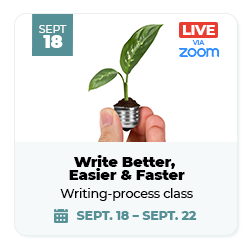Templates beat brainstorming, free association
Can creativity be templated?

Yes it can, according to a team of Israeli researchers.
The researchers studied 200 ads that had been award winners or finalists in top advertising competitions. The researchers found that nearly nine in 10 of the ads could be classified into six templates.
Next, they studied 200 less successful ads — those that had not earned awards. The researchers found that only 2.5% of those ads could be classified into templates.
Traditionally, creative techniques have focused on a lack of system and logic. We try to brainstorm as many different ideas as we can. We say, “there are no bad ideas.” We bring in diverse opinions through focus groups and free association.
But what if we’re wrong?
Can creativity be taught?
Next, the Israeli researchers took a group of novices — people with no advertising experience at all — and broke them into three teams.
- Team One trained for two hours on how to use six creative templates.
- Team Two learned about classic idea-generation techniques like free-association and brainstorming.
- Team Three received no training at all.
Those who’d learned the templates created more creative, memorable and effective ads than the other two teams.
The researchers tested the top ads with consumers. Team One’s ads were rated 50% more creative and 55% more effective at creating a positive attitude toward the products advertised.
The next day, the customers were asked to recall the ads. Team One’s ads were remembered 45% more often than Team Two’s — and twice as often as Team Three’s.
Why reinvent the wheel?
Call it thinking inside the box: The irony is that frameworks, formulas and templates like these can actually help you come up with more effective creative ideas than “free-thinking” techniques.
What templates could you use to make your work easier and more creative?
_____
Sources: Jacob Goldenberg, David Mazursky, and Sorin Solomon, “The Fundamental Templates of Quality Ads,” Marketing Science 18 (1999), 333-51
Chip Heath and Dan Heath, Made to Stick: Why Some Ideas Survive and Others Die, Random House, 2007
Work with — not against — your brain
While we talk a lot about what to write — More stories! Fewer words! Shorter sentences! — we don’t focus so much on how.

Writing is hard because we weren’t taught how to write. Instead, we were taught how to edit: how to spell, punctuate and use the right grammar.
But there is a how to writing. Learn a few simple steps that will make your writing time more effective and efficient at How to write Better, Easier & Faster — our writing-process workshop starting Sept. 18.
You’ll learn to invest your time where it’ll do you the most good … stop committing creative incest … even save time by editing before writing.
Save up to $100 with our group discounts.
